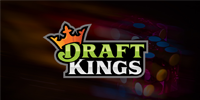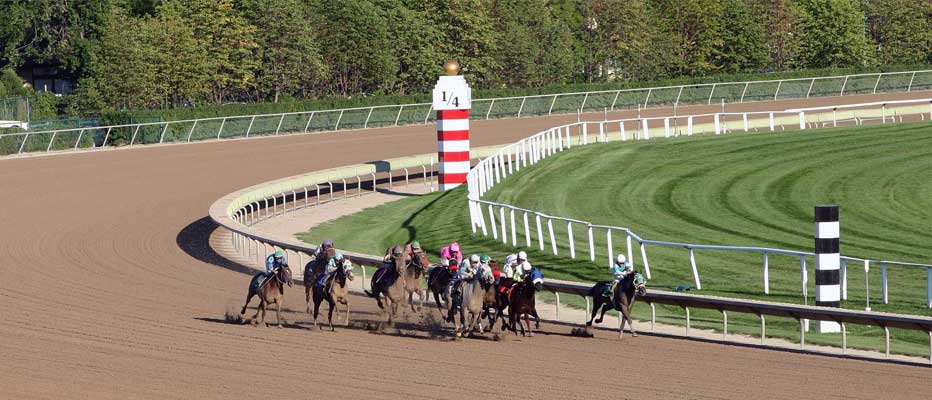Horse Racing – Betting on Horse Races
The history of horse racing in the United States is a long one, dating back to colonial times. For centuries, world-class horses and jockeys have been competing at some of the most prestigious and historic venues. However, for a lot of people, the world of horse racing is completely alien – and that’s where we come in!
In this guide, you’ll learn all about “the sport of kings”. We’ll first discuss the different types of horse racing and its rich history in the US. Then, we’ll look at some of the most popular races and tracks, as well as how betting on the sport works.
Top US Horse Racing Betting Sites
Before we jump into the details of horse racing in the United States, here are some of the best mobile betting sites. Along with odds for the biggest races, both at home and internationally, you can pick up some highly rewarding welcome bonuses.




































Contents
Here’s an overview of what you can expect to find on this page. Feel free to skip ahead to the most interesting bits!
- Types Of Horse Race
- History of US Horse Racing
- Popularity of Horse Racing in the United States
- Biggest Horse Races in the USA
- US Horse Racing Calendar
- Major US Race Tracks
- Triple Crown Winners
- How Betting on Horses Works in the USA
- FAQ
Types Of Horse Race
When we talk about horse racing in the United States, we’re usually referring to flat racing. But the best US racebooks offer betting on international events too. There you’ll find all kinds of races, the most common of which fall into three categories.
Flat Racing
The most famous thoroughbred horse races in the world are run on flat tracks, without obstacles. Whether it’s the Epsom Derby in the UK, the Dubai World Cup in the UAE or Australia’s Melbourne Cup, they all have one thing in common: a flat surface.
In the United States, all of the biggest events are flat races. For instance, the Triple Crown races – the Kentucky Derby, Preakness Stakes and the Belmont Stakes – are all run on the flat. Flat racing in the country is overseen by the National Thoroughbred Racing Association.

Jumps Racing
Although far less common than flat racing these days, there is still a thriving jumps scene around the world. Properly referred to as National Hunt racing, there are different forms, depending on the course. Steeplechasing requires horses to clear much bigger obstacles, called fences. But there are also races which use smaller objects, known as hurdles.
Either way, horses must complete the course without falling or unseating the rider. But they also run over extremely long distances, far more so than flat racing. One of the most challenging events in the world is the UK’s Grand National. Run at Aintree every year, it features 30 notoriously tricky fences spread over 4 miles and 514 yards. In the USA, the National Steeplechase Association oversees this kind of racing.
Harness Racing
Often simply referred to as “trotting”, harness racing involves a horse pulling a jockey along in a two-wheeled cart. In the USA, trotting is restricted to standardbred horses, rather than their thoroughbred counterparts.
The sport’s governing body is the US Trotting Association and there are several notable tracks dotted around the country. These include Yonkers Raceway in New York, Meadowlands Racetrack in New Jersey and The Red Mile in Lexington, Kentucky.
History of US Horse Racing
The history of horse racing in the United States is older than the country itself, having arrived in the colonies with the British. Here’s a timeline of some key events.
- 1665: The earliest recorded horse race takes place in Salisbury, New York.
- 1721: One of the first racing organizations, the South Carolina Jockey Club, is established.
- 1804: The Washington Jockey Club is formed, further cementing the popularity of horse racing.
- 1863: Saratoga Race Course, one of the oldest and most iconic racetracks in the country, opens its doors for the first time.
- 1875: Aristides wins the first Kentucky Derby held at Churchill Downs, KY.
- 1884: The formation of the American Jockey Club helps to standardize rules and regulations for racing across the United States.
- 1908: The American Stud Book is established with the aim of maintaining accurate pedigree records.
- 1919: Legendary racehorse Man o’ War begins his career.
- 1973: Secretariat completes the Triple Crown while posting record-breaking times, solidifying his status as one of the greatest ever racehorses.
- 2015: American Pharoah ends a 37-year wait for another Triple Crown winner.
Popularity of Horse Racing in the United States
Horse racing has been a key part of the culture for hundreds of years. Unfortunately though, its popularity is on a downward trend. There are many reasons for this, including the old-fashioned language used in the sport, as well as the “elitist” feel.
Many just don’t see racing as a “proper” sport when compared to football, basketball or baseball. And of course, the rise of animal rights activists, who like to focus on the negatives, is tarnishing the industry’s reputation. It’s not all doom and gloom for horse racing in the USA though.
Facts and Figures
Although daily attendances at the country’s 300+ tracks were trending downward pre-COVID, the biggest races continue to thrive. As recently as 2015, a record crowd of 170,513 gathered to witness American Pharoah win the Kentucky Derby and US racing’s ultimate prize.
Even without the Triple Crown factor, crowds were consistently topping 150,000 right up until the lockdowns. For instance, the 2017 Preakness Stakes set a record attendance of 140,327.
In 2012, the horse racing industry in the US was valued at $5.48 billion. In 2019, this had slipped to $4.94 billion – hardly a total disaster. But other key metrics show real growth. Take the amount of prize money available in the sport, for instance. 2022 figures indicated a 35.77% increase, exceeding more than $1.1 billion.
The total number of races also rose, by over 20% in fact. So did the average purse size, growing by more than 10%. And from a betting perspective, the total horse racing handle in the United States was over $12.2 billion in 2021. That’s a jump of almost 12% from 2020.

Biggest Horse Races in the USA
Let’s now learn a little more about some of the biggest events in the US horse racing calendar.
Kentucky Derby
The Kentucky Derby is probably the most famous horse race in the country. This 10 furlong dirt race is open to the best three year old colts and fillies. Nicknamed “The Run for the Roses”, due to the floral blanket draped over the winner, there’s a total purse of $3 million at stake. It is held annually at the world-famous Churchill Downs track in Louisville, Kentucky, and was first run in 1867.
Kentucky Oaks
This is essentially the fillies-only equivalent of the Kentucky Derby, held the Friday before the showpiece race. A prestigious Grade 1 in its own right, the winner of this nine furlong contest will pocket a cool $750,000. It also takes place at Churchill Downs, and the first ever Kentucky Oaks was run in 1875.
Preakness Stakes
A purse of $1.65 million is at stake in the Preakness Stakes, the second leg of the USA’s Triple Crown. Run annually at Pimlico Race Course in Baltimore, Maryland, the race was established back in 1873. It takes place on dirt over a distance of 1 and 3⁄16 miles, or 9.5 furlongs.
Belmont Stakes
The final leg of America’s Triple Crown, Belmont Stakes, is held every June, at Belmont Park in Elmont, New York. Established way back in 1867 it is a dirt race, run over 12 furlongs. Open only to three year olds, the total purse is worth $1.5 million. The record time of 2:24 for completing the course is held by the legendary Secretariat.
Pegasus World Cup
First run in 2017, this nine furlong invitational race is open to horses aged four and above. The original idea was to create a valuable race that wouldn’t clash with the Breeders Cup or Dubai World Cup. It gives retiring horses one final swansong before retiring to stud. The first purse was a whopping $12 million, though these days it is set at $3 million.
Breeders’ Cup
Spread over two days every November, this series of Grade 1 races pits the world’s top thoroughbreds against those from the United States. The venue alternates, with prestigious locations including Churchill Downs, Santa Anita Park and Keeneland all hosting in recent years. Prize pools vary in size, but there’s an impressive $6 million purse for the 10 furlong Breeders’ Cup Classic.
Travers Stakes
Nicknamed the “Midsummer Derby”, this 10 furlong Grade 1 race takes place annually at Saratoga Race Course in New York. First run in 1864, it has been won by some legends of the sport, including Man o’ War in 1920 and Arrogate in 2016. These days, the total purse is worth $1.25 million and the race takes place on dirt.
Arlington Million
This Grade 1 race is held at Colonial Downs in New Kent County, Virginia. However, it was originally run at the now-closed Arlington Park, Illinois, which is where the name comes from. With a $1 million purse, it is open to any horse aged three or older. The race is run on turf over a trip of 1 and ¼ miles, or 10 furlongs.
US Horse Racing Calendar
Now that you’re up to speed with the sport’s showpiece events, here’s where they fit into the bigger picture.
Major US Race Tracks
There are more than 300 horse racing venues spread throughout the United States. Here’s the lowdown on the country’s biggest tracks.
Belmont Park
One of several important race tracks located in New York, Belmont Park can be found in Elmont. Its biggest race is the Belmont Stakes, which forms part of the Triple Crown. But Belmont also hosts the Champagne Stakes, the Metropolitan Handicap and the Belmont Oaks. The huge grandstand is an iconic landmark and in 2004, Belmont saw its biggest ever turnout when 120,139 attended the Belmont Stakes.
Churchill Downs
Home to two of the USA’s most illustrious races in the Kentucky Derby and the Kentucky Oaks, Churchill Downs is a world-famous venue. Known for its towering twin spires, it is also one of the country’s oldest continuously operating race tracks. Opened on May 17, 1875, the race course is situated in Louisville, Kentucky. The course also plays host to other Grade 1 races, including the Clark Handicap and Humana Distaff.
Del Mar
Found in Del Mar, California, this race track was famously opened by Bing Crosby in 1937. Due to its beachside location, you’ll often hear the catchphrase “Where the Turf Meets the Surf” used when discussing Del Mar. It is home to prestigious races such as the Pacific Classic and the Del Mar Oaks.
Gulfstream Park
Opened in 1939, Gulfstream Park can be found in Hallandale Beach, Florida. Its major races include the Florida Derby and the Fountain of Youth Stakes. But more recently, it has become home to the multi-million dollar Pegasus World Cup, which launched in 2017. A record attendance of 26,222 flocked to that inaugural meeting. The venue also houses a large casino.
Pimlico Racecourse
This track in Baltimore, Maryland is home to the Preakness Stakes, which makes up the second leg of the Triple Crown. In 2017, a record crowd of 140,327 witnessed Chad Brown’s Cloud Computing beat Classic Empire by a head. Pimlico is also home to several other major fixtures in the US horse racing calendar, including the Black-Eyed Susan Stakes and the Dixie Stakes.
Santa Anita Park
Capable of accommodating more than 85,000 spectators, Santa Anita Park is located in Arcadia, California. It has been selected to host the Breeders’ Cup more than ten times, the most recent of which came in 2023. However, the two biggest races of its own are the Santa Anita Derby and Santa Anita Handicap. A picturesque venue, the stunning San Gabriel Mountains are right on the doorstep.
Saratoga
Opened in 1863, this track can be found in Saratoga Springs, New York. It is home to 17 Grade 1 races, including the Travers Stakes, Whitney Stakes and more recently, the Jockey Club Gold Cup. Until 2021, the latter had always been run at Belmont Park, but a tweak to the racing calendar saw its relocation.
Triple Crown Winners
To date, just thirteen horses have successfully completed the Triple Crown, securing their status as legends of the sport.
How Betting on Horses Works in the USA
In the United States, the most common way to bet on horses is pari-mutuel, or pool betting. With this method, all bets are pooled together and shared among the winning tickets. That essentially means that nobody knows what their returns are going to be until after the race is over.
Other countries, such as the United Kingdom, favor a fixed-odds model. Here, the bookmaker tells you the current price and you can bet at those odds, or take the official starting price instead. This form of betting is only legal in two US states: Colorado and New Jersey.
From the punter’s perspective, fixed-odds are undoubtedly superior. This is backed up by the betting public too. A survey of 1,500 sports bettors suggested that two-thirds would place bets on horses if fixed-odds ever became an option. The same poll found that 83% of existing racing punters wanted to see fixed-odds introduced.
However, the traditional pari-mutuel model is likely to continue to dominate the US horse racing scene for many years to come. A significant proportion of the pari-mutuel betting handle is used to fund racing purses. As such, the sport’s organizers are not keen on introducing any initiatives which may lead to a reduction in turnover.
Bet On Horse Racing
If learning about horse racing has whet your appetite to get involved, be sure to join one of our trusted betting sites. Many of these top US racebooks allow you to live stream races. So not only can you place bets at generous odds, you can watch every second of the action.
FAQ
What is the USA’s Triple Crown?
Winning the Kentucky Derby, Preakness Stakes and Belmont Stakes in the same season is referred to as the “Triple Crown” in US horse racing. 13 horses to date have achieved this, the last being Justify in 2018.
Is horse racing popular in the United States?
Yes. The horse racing industry in the United States is worth billions of dollars. Racegoers continue to flock to major tracks to watch the biggest events. Record crowds witnessed the 2015 Kentucky Derby and 2017 Preakness Stakes, for instance.
What is the biggest horse race in the USA?
The Kentucky Derby is considered the most prestigious horse race in the United States. In 2023, the winning horse, Mage, secured prize money of $1.86 million from a total purse of $3 million. Several races at the Breeders Cup feature $1 and $2 million dollar purses, with the Breeders' Cup Classic worth a staggering $6 million.
Where can I bet on horse racing in the United States?
It’s legal to bet on horse racing in most states, as long as you’re at the track. Many jurisdictions also permit online betting, but you’ll need to check your local regulations. We’ve listed the best horse racing betting sites in the USA at the top of this guide.
What makes a good horse racing betting site?
First and foremost, ensure your chosen betting site has a proper license. Then you should look for generous odds, a wide range of markets, rewarding promotions and secure payment methods.
What is the safest US betting site for horse racing?
It’s hard to specify which is the safest betting site for horse racing in the USA. However, one thing’s for sure. All of the recommended mobile betting sites featured on this page are well-respected, properly licensed and proven to be safe.
Are there any legal racebooks in the USA?
Yes, there are many legal horse racing betting sites in the country. Whether or not betting is permitted depends on your exact location, however. Make sure you check the local laws in your own state before attempting to place online horse racing bets.
Where can I find free bets on horse racing?
All of our top-rated US horse racing betting sites offer a selection of rewarding promotions. Each one awards a sizable welcome bonus, including free bets for use on horse racing. Many even provide ongoing free bets to existing players.
Latest News

Looking to learn about the Preakness odds? Good news! In this guide, we’ll discuss everything you need to know about […]
Newsletter
Popular bonuses
















